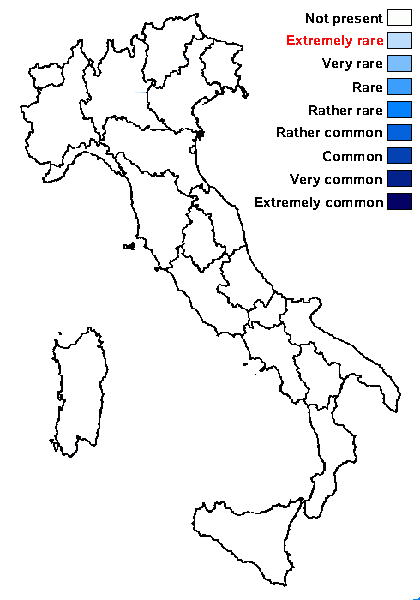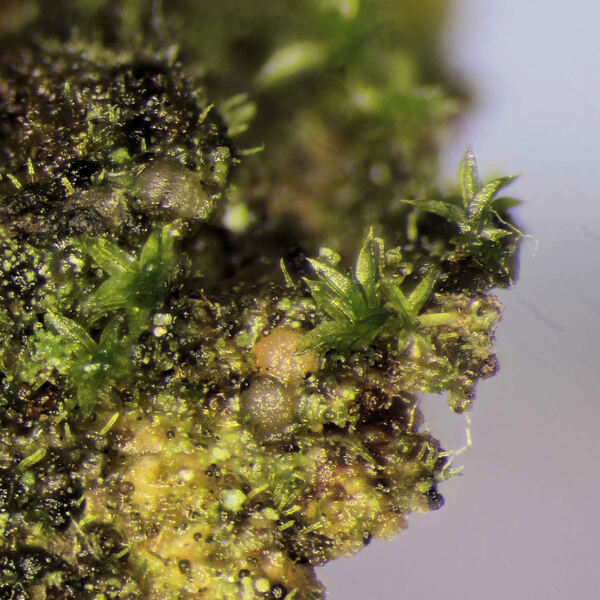Biatoridium delitescens (Arnold) Hafellner
Acta Bot. Fenn., 150: 43, 1994. Basionym: Biatorella delitescens Arnold - Flora, 59: 566, 1876
Synonyms: Strangospora delitescens (Arnold) Coppins
Distribution:
Description: Thallus crustose, endosubstratic and inapparent, sometimes consisting of scattered, pale, small granules. Apothecia biatorine, 0.2-0.4(-0.5) µm across, partly immersed to sessile, scattered, pale yellow to very pale pink-brown when dry, translucent and almost colourless when wet, with an initially flat but soon convex disc, without a distinct proper margin. Proper exciple thin, poorly developed, with a reduced structura globulosa; epithecium colourless, without crystals; hymenium colourless, (50-)60-70 μm high, I+ blue; paraphyses flexuose, separating and clearly visible in K, mostly simple, c. 1.5 μm thick, the apical cells not thickened; hypothecium colourless to very pale yellow, 35-65 μm high, composed of interwoven hyphae, I+ blue. Asci 100(-150)-spored, clavate or saccate, thick-walled, especially at apex, with a layered apical K/I+ blue dome and a K/I+ intensely blue inner cap, the outer wall I+ pale blue, 45-80 x 15-20 μm, Biatoridium-type (Hafellner 1994). Ascospores 1-celled, hyaline, globose, 4-4.5(-5) μm, thick-walled. Photobiont chlorococcoid. Spot tests: K-, C-, KC-, P-, UV-. Chemistry: without lichen substances.
Note: on bark in Xanthorion-communities; distribution poorly known, but apparently rare, with a few scattered records in the Alps outside the Italian territory. To be looked for in Italy.
Growth form: Crustose
Substrata: bark
Photobiont: green algae other than Trentepohlia
Reproductive strategy: mainly sexual

Predictive model
Growth form: Crustose
Substrata: bark
Photobiont: green algae other than Trentepohlia
Reproductive strategy: mainly sexual

Predictive model
 INDEX FUNGORUM
INDEX FUNGORUM
 GBIF
GBIF


